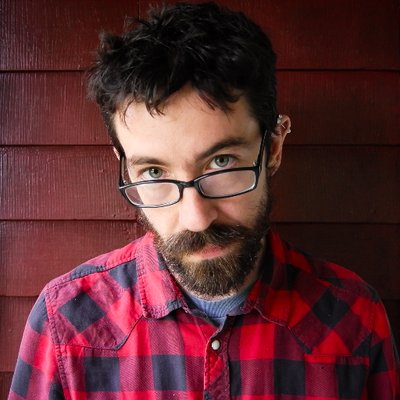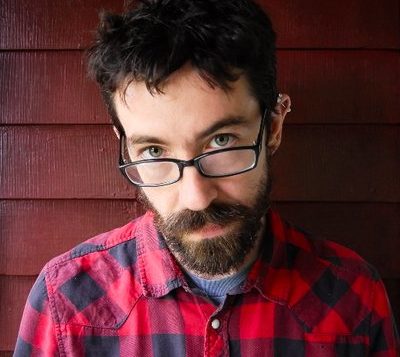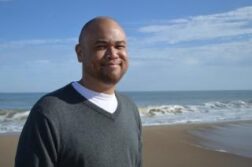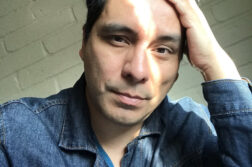“IT IS often assumed that the history of American sexuality is one of linear progress, moving from a time of benighted homophobia to our present-day enlightenment. However, the further back one looks, the more it seems to be a story of incoherence before intolerance, of ‘not knowing’ before ‘not accepting,’” writes Hugh Ryan in When Brooklyn Was Queer (St. Martin’s Press, 2019).

The book is a fascinating and accessible tour of queer Brooklyn from 1855, when Walt Whitman published Leaves of Grass, to 1966, when the Brooklyn Navy Yard, long a hub for gay cruising and socializing, closed down. It covers the lives of the famous and the infamous, the noble and the corrupt, the chaste and the slutty, the radical and the reactionary—and everyone in between. From Coney Island sideshows to Brooklyn Heights salons, from subway bathrooms to burlesque theaters, from the courtroom to the prison to the bathhouse, this book functions not just as a rigorous and wide-ranging queer history, but as an informal history of Brooklyn itself.
This interview was conducted by phone this past June. I had a chance to chat with Ryan about his goals in writing When Brooklyn Was Queer, the conversations he hopes to instigate, and his thoughts on the trajectory of lgbtq politics today.
Mattilda Bernstein Sycamore: I’m wondering if you could talk about how you came to write this book of queer history, as someone who was not formally trained as a historian.
Hugh Ryan: I often joke that I came to write the book out of pure ignorance. I had studied women’s studies in college, and in the course of doing that had read a lot of queer history. I grew up right outside New York City. My parents were from the Bronx. We were in the city all the time. I kind of felt like I knew queer history and I felt like I knew New York City. I was working on an exhibit related to Brooklyn’s history for a show that I was putting together with friends [and realized that]I actually didn’t know anything about the queer history of Brooklyn. And when I started to ask people, that was kind of the response I got generally.
And I remember thinking to myself—okay, we just don’t happen to know it, but there’s definitely a book. It was probably printed by Alyson Books in the mid-’80s. I’ll just go to the library and it will be in some branch. And I was shocked when there wasn’t one.
MBS: I love the way you define “queer” in the book, to refer to people whose sexuality or gender identity isn’t conventional for their time. I think it allows you not to get stuck on sexual contact as the only defining feature of queerness, but rather to talk about a spectrum of people who lead unconventional lives. I think most other scholarship on similar worlds at the time in New York would use either the word “gay” or “homosexual.”
HR: I didn’t want to project these sort of specific identities backwards, which maybe wouldn’t make sense to these people, and I wanted to be able to encompass a larger world. For instance, I write about women with beards who performed at Coney Island, and for most of the women that I looked at historically, there’s no evidence that they saw themselves as being part of the queer world as we would think of it today. But they definitely understood themselves as people whose lives were greatly impacted by their marginalized gender identity or presentation.
And that also got around the question, Did these people have genital sex—before we can discuss them as homosexual—or did they at least have a degree of shame about their relationships? I think that’s the other thing that stands in for really proving [homosexuality]: you have genital sex or you have shame over how you feel, and I wasn’t particularly interested in either of those being the marker of queerness.
MBS: Do you think reclaiming words of marginalization is part of reclaiming history?
HR: To a certain degree, I think it has to be. There has to be a level of taking certain words, especially words that are really proximate to your experience, or the words that maybe would have described you in a negative sense ten years before. I think there is a level of defusing when we take those words and make them our own and refuse to let them alone. Often because I think it’s marginalized subjects themselves who have been going back into the history first, and they’re wanting to use it in a way that is healthy and makes them feel better about themselves and take back those words and then extend out from there.
MBS: I wonder if, by including gender transgression under the rubric of queerness, do you feel like you’re also coming up against a contemporary desire within much of trans discourse to rigidly separate gender and sexuality?
HR: Yes, I do see it as a bit of a problem, but I—it’s sort of interesting. Doing the research gave me a different view on it. What I started to see historically in an American context was that, if you go far enough back in time, gender transgression is really the major marker of all queerness, and what you did as a sexual act with another person might reflect on your gender. And only those people who were visibly transgressing gender were sort of a priori categorized as “queer.”
MBS: One thing that separates your book from some others about gay and queer history is that it’s very clear that you’re striving for a gender and racial balance. I’m wondering if you could talk about some of the challenges you faced in that process.
HR: I think for me what became really important were a number of things. One, I was so surprised by how white Brooklyn was. That was something I needed to investigate because it felt like there was a difference between now and then, and I needed to understand how that happened.
MBS: It was like 97 percent white at around the turn of the 20th century.
HR: Yeah, like 98, 99 percent white at certain points. Brooklyn was extremely white and more racist than Manhattan. And it had that kind of parochialism that we associate with the suburbs. But I also realized, in doing my research, particularly in the 19th century, the experiences of men and women, white people and black people in New York were very, very different. Many histories I was reading would talk about a generalized experience, but when you looked closely, they were only talking about white folks and very occasionally a person of color whose experiences were very similar to those of white people. And when I looked at the experiences of most people of color in Brooklyn, it was obvious that they were going to be very different. And the experiences of men and women were going to be very different, too. So it became important to me, not just from my wanting to explore diverse history, but just from wanting to get it right.
MBS: In the book you write about the history of sexuality in the U.S., not as a linear path toward enlightenment, but as a push and pull between the poles of acceptance and persecution. Where do you think we are now?
HR: I think we’re in a moment of great acceptance in certain senses around sexuality. Certain things feel like they have moved far enough into the realm of acceptance that it seems unlikely we’re going to go really far back on, say, gay relationships being okay. Tolerable, let’s say. We haven’t reached a place where we won’t go back on people being loving and accepted. That will happen all the time.
On trans rights, I feel like we’re really in a moment right now where it’s a wildly swinging pendulum. I have no idea where it’s going to land. I also think, on a global note, there is a part of me that feels like we are slipping inexorably toward fascism. Fascism, even when the fascists themselves are queer, never does well for queer people.
What I found that was fascinating for me was that these scientists in the 1910’s and ’20s became really obsessed and interested in queer people, because they saw black people as an external threat to whiteness but queer people as an internal threat.
So in certain ways there’s a degree to which the origins of homophobia and a lot of our ideas about sexuality in general are directly implicated in an idea of white supremacy and protecting and preserving the white race. And that’s not something we think about when we think about homophobia. We think about gender transgression and misogyny and toxic masculinity and conservative religious traditions, but rarely do we think about the role of white supremacy in constructing homophobia, and I think it’s really there if you look at this history.
MBS: Do you think this points to the necessity to fight white supremacy as part of queer liberation?
HR: Absolutely. I think it has to be hand-in-hand because, much like I always think that fighting homophobia and transphobia has to go hand-in-hand—because the other side does not see a difference. They might see some small difference in exactly how awful we are and in what ways, but this kind of idea that we are awful is implicated together, and so we have to tear it all down.
Mattilda Bernstein Sycamore is most recently the author ofSketchtasy, one of NPR’s Best Books of 2018.






